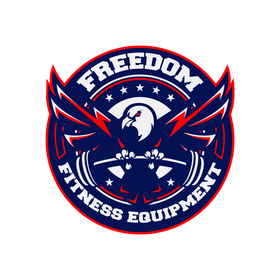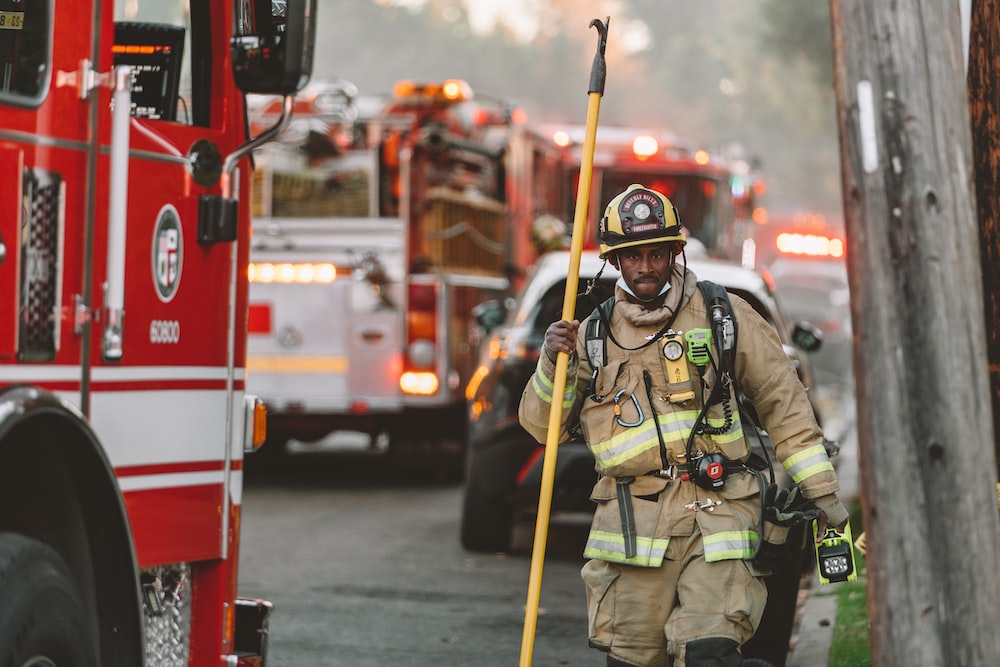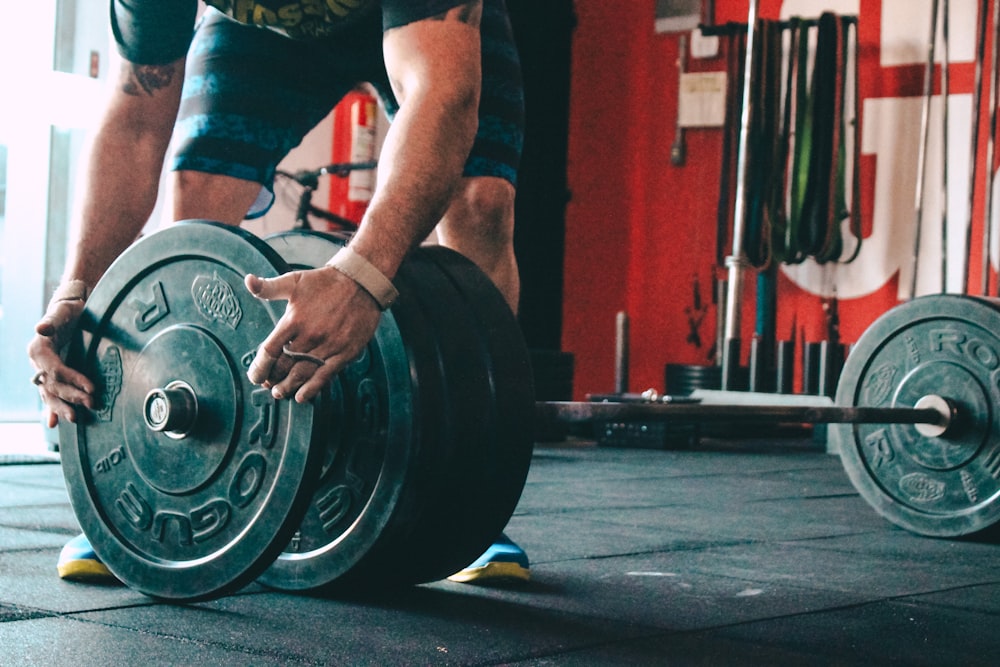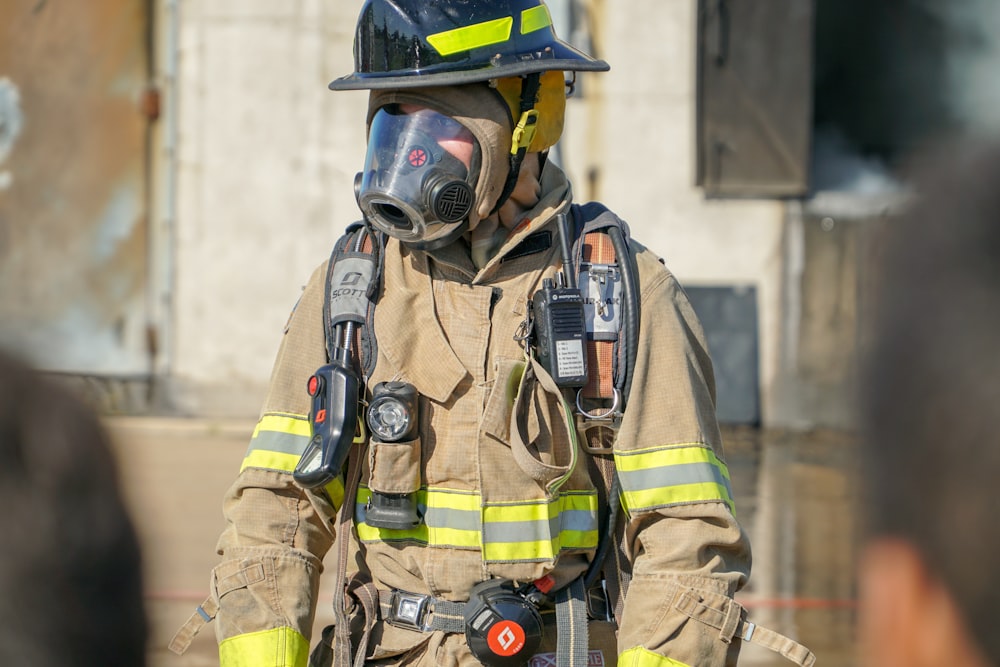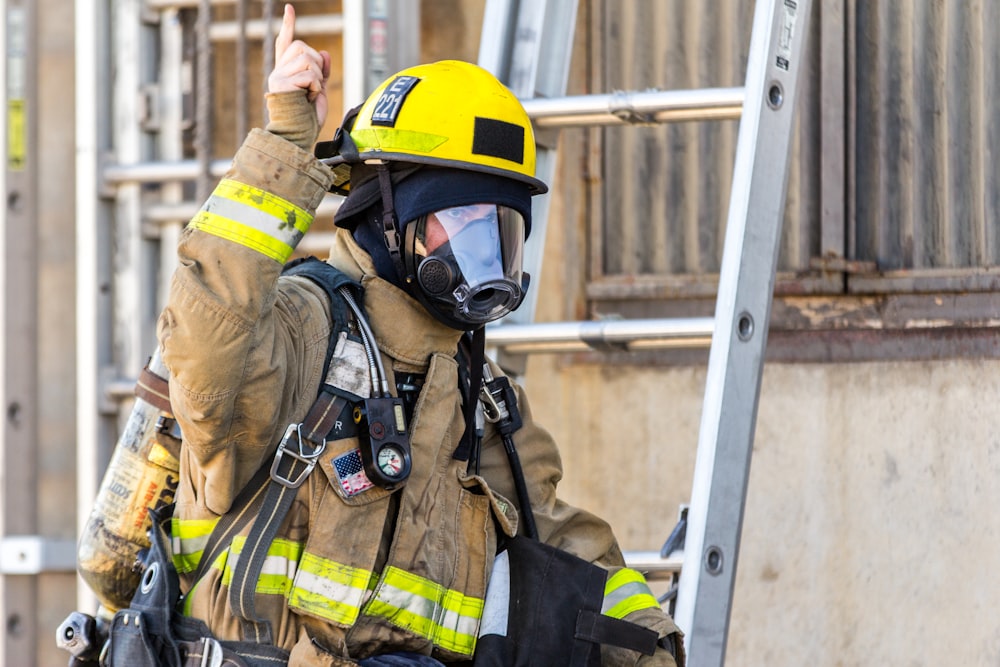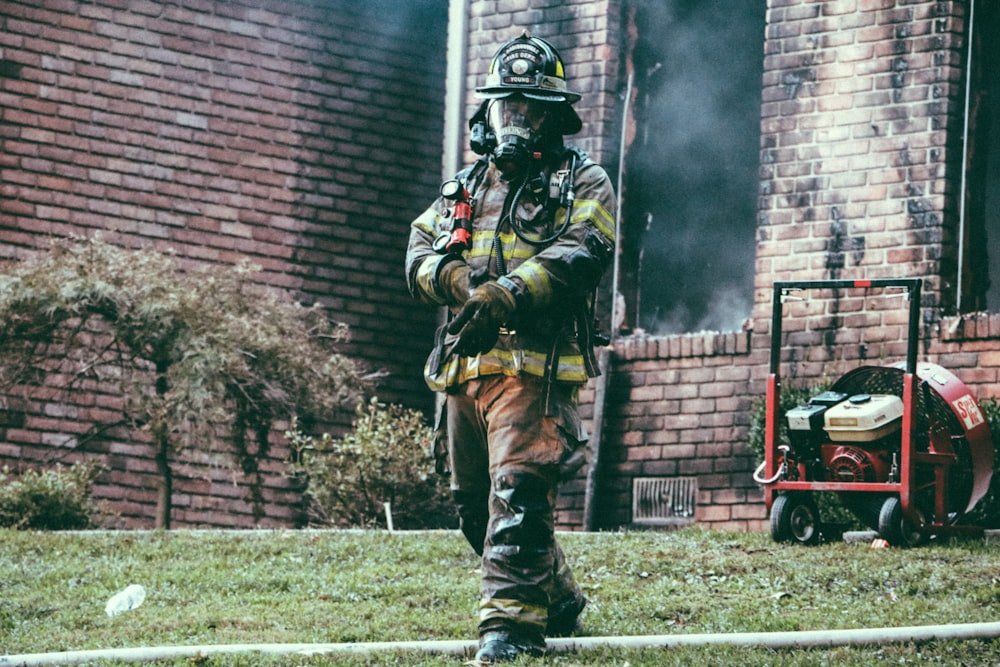We all know that exercise is good for us. We constantly hear about how it can improve our mood, our body composition, our heart health, and, of course, help us get absolutely jacked.
The truth is that exercise is one of the greatest things you can do for your overall health for many of the reasons just mentioned and countless others. These benefits are available to all people who choose to work out, from students and teachers to lawyers and doctors. Fitness is critical for all people to help you not only have a long, healthy life, but a high-quality life as well.
Now, let’s take it a step further and look at firefighter health. While, lawyers may have some stairs to climb to the courthouse, physically the job is not all that demanding. However, firefighters are faced with all the same reasons for having great fitness levels plus the fact that their job requires high levels of fitness. Whether we are talking about moving ladders, being able to withstand carrying air packs, or having firefighters respond to structure fires, the need for high levels of fitness is pretty obvious.
The problem is that many firefighters are not in good enough shape for the demands of the job. It shouldn’t and doesn’t have to be this way.
Let’s jump right in and look at why firefighter health and fitness should be a priority.
Why Train?
Increased strength. Increased power. Look and feel better. Increased cardiovascular health. Release stress. I can go on and on but don’t take it from me.
Certainly, in the fire academy, you didn't have a say as to whether or not you wanted to train, but let's look at some reasons firefighter Ryan Starling from San Bernandino Fire Department gives.
He says, "We're signing up to do this. Our job is demanding,” he said. “People are counting on us – it's not our choice. I always say, as soon as you take the oath, you lose the right to be out of shape."
Also, "Working out is great, because you get that endorphin release. You're going to be stressed – don't take it out on your family or anything else,” he said. “It will keep building and building if you don't have a release. Whatever you do, don't take that stress home."
And finally, "We get a lot of fire calls, man-down calls and some random, crazy calls,” he said. “We stay really busy, and that means we have to be physically fit."
I think the biggest point he is getting at is that your fitness levels have a direct impact on the people around you, whether that be other fire service members, members of the community, or even your family.
A career in firefighting is inherently dangerous.
There are certain risks that you take when you begin a career in the fire service - whether we are talking about heart disease and stress, cancer, or mental health. While training and increasing your fitness is not a one-size-fits-all bandaid for all of the firefighter health risks of the job, it can certainly play a large part in an overall healthy lifestyle and in preparing you for the demands faced.
Hopefully, you already know the importance of training and are hoping to learn more about what exactly to do. Let’s dive into those questions now.
What Is My Training Goal?
This is a big question. There are countless ways people exercise. Whether you subscribe to the yogi crowd, the ultramarathoners, or even powerlifting, there are certainly many, many ways we get exercise in. While there are many options, many of these aren’t ideal for your career in firefighting.
The first thing we want to consider when beginning training is what are we hoping to accomplish - or simply what are your goals? For most people who aren’t in a physically demanding job, this is generally based on things like performance, physique, or general health goals. For performance goals, we are talking about things like squatting 315 pounds, running a 5k, or doing an Ironman. For physique goals, we would be looking at things like body fat percentage or chasing an ideal body. Finally, for general health goals, we may consider things like what quality of life you want as you age, maybe you want to be able to run around with your grandkids, or simply try and avoid medical emergencies for as long as possible.
All of these are great ways to approach training for the general population. However, as a firefighter, these should be secondary goals.
I think a helpful mindset shift for firefighters could be considering your job as a sport.
Here’s what I mean by that - how do athletes train? Athletes are almost never concerned primarily about physique or the amount of weight lifted. These are second and third-level concerns; the first concern is how does my training make me better and more prepared for my sport. They don’t lift weights to compete at powerlifting meets - although many athletes are strong enough to do just that. They also don’t sprint to enter a 100m race - although again, some could also do that. No, they do these things with another end in mind. The end in mind being how does what I am doing better prepare me for practice and ultimately games to be the best at my sport as I can be.
So how does this athlete’s mindset apply to firefighting?
Firefighters should be first and foremost concerned about how their physical training better prepares them for the extreme situations they could be called to at any moment in the fire service. That is the first priority for a firefighter. This isn’t to say firefighters shouldn’t be concerned about how much weight they lift, how fast they can run a mile, or even how they look. However, if performance is the number one goal, and if I let you in on a little secret - when chasing performance, the other goals almost always take care of themselves.
Also, valuing performance on the job as the number one goal is going to have some other benefits. In the short-term, safety. While no amount of physical training is going to prevent injuries, training to be better prepared for the demands of firefighting is going to be a huge advantage. This should be pretty easy to see, if you are stronger, performing tasks requiring strength are easier and you are at a decreased risk for injury. If you are in better cardiovascular shape, not only is it easier to breathe, but when you are performing difficult tasks while being out of breath, you are better able to better focus and stay calm.
There are also life and death benefits that come from valuing performance as your number one priority in physical training as a firefighter and ultimately for fire departments as a whole. I know it may sound harsh, but don’t take it from me.
According to a recent study, “Cardiac incidents and over-exertion are the leading causes of on-duty deaths. Cardiac incidents alone account for 40-50% of on-duty death among firefighters.” While physical training won’t eliminate every one of these, it can be a massive factor in eliminating half of the on-duty firefighter deaths.
Certain factors are simply out of our control when it comes to cardiac incidents - factors such as the nature of the job, age, gender, and family history. However, for every factor out of our control, there are factors that firefighters can control and improve. Some examples here include “obesity, high blood pressure, smoking status, poor nutrition, poor hydration, and lack of physical activity and physical fitness.” Physical training has a direct impact on almost everything on this list.
The point here is that even when fire safety precautions are taken, firefighting is dangerous. However, what’s more, shocking is that so much of the risk is coming from factors that can be modified and improved.
When you signed up for a career in the fire service you recognized a certain amount of inherent risk; however, let’s use exercise to eliminate unnecessary risk.
That’s what we will dive into now.
How To Train?
They say a goal without a plan is a dream. Well, we have the goal - preparedness and performance on calls - so what’s the plan?
While this isn’t the place to write a complete year-long training program, I want to give you a few general guidelines as well as some sample workouts to give you a better idea of what your training should look like to best achieve our goal.
Training for firefighting should mimic tasks you do every day and extreme tasks that you need to be prepared for. This is the reason it doesn’t make a ton of sense for firefighters to do solely yoga or solely run marathons. A career in the fire service requires a certain level of strength as well as cardiovascular ability and often a combination of both at times.
Let’s first look at strength.
How do you get strong? There are many opinions on the optimal way to do this, but the general consensus is to lift weight through full ranges of motions multiple times a week over a long period of months and years, while progressively adding resistance. Depending on your starting level, you may see what we call “newbie gains.” If you haven’t lifted weights all that much, the reason you are seeing these strength increases is not necessarily due to new muscle tissue but better motor unit control - think about it almost as though you are learning how to use the strength and muscle tissue you already have. However, if you have been lifting for a while, you know how difficult it can be to gain additional strength - five-pound PRs are a huge win!
Okay, let’s break this down - lift weights.
Whether you are using a barbell and weight plates, dumbbells, kettlebells, or even a weight vest, using additional weights is the key to building strength. You certainly can get stronger doing bodyweight exercises like pushups and pullups and those are critical in a good training program, but lifting weights is key.
Full ranges of motion.
Another fancy word for a similar idea is compound lifts. This just means performing exercises that use as many joints and muscle groups through full ranges of motion in order to maximize strength and health. Some examples of this include squats, overhead press, deadlifts, bent-over rows, and bench press. All of these lifts are going to work for multiple muscle groups and give you the greatest strength adaptation.
Multiple times a week.
While you don’t have to necessarily squat multiple times, bench multiple times, etc. per week to see gains in strength, you should be doing multiple compound lifts at least once per week. Consistency is huge here.
Over long periods of time.
Your workouts don’t have to be all that long. Best practice, depending on your exact workout, is somewhere between 3-6 days per week with each workout being forty-five minutes to just over an hour and you will be golden. However, the key here is doing this for months and eventually years. That’s where the reward is. Anyone can work out for a week; however, you won’t notice any changes that quickly. Be consistent and commit to a plan for the long run.
Finally, progressively adding resistance.
In order to get stronger you have to continue to increase the stimulus you are giving your body. If you continue to do squats with only a barbell for two years, you may get good at squatting but at a certain point, you won’t get any stronger. However, if you are continuing to challenge yourself by adding resistance in the form of weight plates you will continue to adapt and see progress in your strength goals.
Now, let’s talk about cardio.
If you are like most people, you probably have a pretty rocky relationship with cardio. Almost no one actually likes cardio, some people get excited about lifting weights and the pump, but not cardio. However, your cardio fitness is as important if not more important than your strength as a firefighter. Similar to strength, there are many views when it comes to improving cardio. In order to simplify it, I think there are two primary types of cardio you should be concerned about and they are both based on heart rate - low and long and high and hot.
Low and Long
This type of training is also known as zone 2 training. What this does is build your aerobic base, basically allowing you to push harder and sustain longer when you need to. Think of this like a pyramid - pyramids have high points because they have a wide, strong base. That’s what you are doing here. You are essentially trying to improve your “easy” pace allowing you to sustain moderate amounts of work longer and improve endurance.
So, you may be wondering, what does zone 2 mean? Heart rate zones are labeled from 1-5, with 1 being a slow walk, able to have a conversation with no issue, and 5 being max effort and you are lucky if you can get a word out. While there are specific heart rate ranges for each, a simple way to think about zone 2 is that you should be able to hold what we call conversational pace - meaning you can hold a conversation but have to pause for breaths every sentence or so.
Typically, this is about 75% of your max heart rate. For zone 2 workouts, you want them to last for at least forty minutes, but oftentimes you may need to start with say twenty minutes and build up if you haven’t done much cardio in a while. You can bike, run, or even walk at a brisk pace, and if you have a heart rate monitor that can be a helpful way to make sure you are in the right range as you first start out. No big deal if not.
High and Hot
So if the purpose of long and low is to build your aerobic base of your pyramid, you can think of high and hot as building the peak of the pyramid.
This type of training is designed to improve your peak output for short durations. This type of training is good for almost every type of person - athlete, firefighter, or general population. However, as a firefighter, you need to be familiar with and ideally comfortable with this high heart rate state as you never know the type of call that could be next.
Now, I referred to this type of training as “hot” because, unlike the long and low aerobic training, this type is quicker. This is simply because in order to reach close to max heart rate levels it takes considerable effort, and this effort is generally not sustainable for forty-plus minutes. One of my favorite ways to train high and hot is with interval training. This allows you to push to your limits or very close to your limits rest for a period of time and repeat. That way you are able to get the benefits of high heart rate training - such as, “improve cardiovascular health, cholesterol levels, insulin sensitivity, stabilize blood sugar levels, reduce fat, maintain muscle mass” - without burning out. This could look like running, biking, or even some form of functional fitness.
The purpose of going through some of the reasoning behind the training is to allow you to be an active participant in your physical training program. Yes, there are programs that will tell you exactly what to do, but it is important you understand more of the why. Ultimately, you are the one responsible for your fitness level.
Let’s now take a look at some example training days for firefighters.
A few notes before we look at the training days. This is just a sample week and its purpose is to give you an idea of what your training could look like. Always remember to start slower and lighter than you think if you are new to lifting or haven’t trained in a while - it is good to scale workouts when needed. One of the most important goals of training is being able to show up the next day. Also, a warm-up is crucial. Be sure to warm up all movements you are doing in the training and get your heart rate up to best be prepared.
As you can see all of these workouts can be done in an hour or less and are designed to be efficient. Be sure to look up any exercises you are unfamiliar with. Injuries in the gym generally happen due to one of two reasons - trying to lift more weight than you are capable of or bad technique. Ideally, these four training days would be spread out over a week.
Training Day #1
- Back Squat 4x5 @ moderate weight
* in between sets 3 broad jumps
4 rounds:
- 200m Run
- Max Weighted Walking Lunges
- 2 minutes work, 2 minutes rest
Comments: This is the “high and hot” day, the purpose here is to get your heart rate high and let it recover and repeat. For the lunges, you can use dumbbells, kettlebells, or even a weight vest.
Training Day #2
- Strict Shoulder Press 4x5 @ moderate weight
* in between sets 4-10 strict pullups
5 rounds:
- 1k Bike
- 15 Pushups
- 20 KB swings
- 50 Jump Rope
Comments: Strict pull-ups depend on your ability. You want to choose a number that you can hold for all four sets. If you are unable to do strict pullups do inverted barbell rows. The bike should take you about 2 minutes, so if your bike doesn’t have kilometers, give a good effort for roughly two minutes. Hopefully, your pushups are as good as they were in the fire academy, feel free to scale if not.
Training Day #3
- 40 minutes @ Zone 2 pace
Comments: Feel free to choose your preference - running, biking, climbing stairs, etc.
Training Day #4
- Romanian Deadlifts 4x5 @ moderate weight
AMRAP 30
- 30 Step Ups
- 30 Burpees
- 300 ft Farmer’s Carries
Comments: AMRAP just means “as many rounds/reps as possible.” For the step-ups, if you have a box that is at least 20” use that. For the farmer’s carries, use dumbbells or kettlebells. This workout was designed to allow you to wear your air pack to better prepare for real-life calls. If you don’t wear an air pack and are able, add weight to the step-ups with either single or double dumbbells or kettlebells.
What Equipment Do I Need?
While you can get a good workout with just your body weight, it is highly recommended that you have access to some basic equipment. What I would consider essentials include dumbbells, a barbell and weight plates, and a squat rack with a pullup bar. Some really nice to-haves include kettlebells, a plyometric box, a stationary bike, and a rower. There is a ton of other equipment that could be helpful, but if you have the essentials and most of the nice to-haves you are going to have a really solid setup for physical training.
Ideally, fire departments are training together when on shift. This is a great way to build accountability, make the most of your time, and be able to push yourself with other firefighters. We understand that all fire departments don’t currently have the equipment listed above, with many missing many of the essentials. At Freedom Fitness Equipment, we want to help your fire department or fire academy have all of the equipment you need for improving the fitness, health, strength, and safety of our firefighters.
We realize underfunding is a real issue and are passionate about creating gym packages that are under budget and deliver incredible value. We have a program specifically designed for first responders, so please reach out and see how we can help your fire department be best prepared for whatever call comes next.
Sources
Calams, Sarah. “Quiet Warrior: How CrossFit Has Helped One Firefighter Become the Best He Can Be.” FireRescue1, 13 July 2018, www.firerescue1.com/fire-products/apparel/articles/quiet-warrior-how-crossfit-has-helped-one-firefighter-become-the-best-he-can-be-LkComwSfpb5SOym1/.
Chizewski, Annmarie, et al. “Fitness Fights Fires: Exploring the Relationship between Physical Fitness and Firefighter Ability.” International Journal of Environmental Research and Public Health, 9 Nov. 2021, www.ncbi.nlm.nih.gov/pmc/articles/PMC8625752/.
Konstantinovsky, Michelle. “What You Need to Know about HIIT Workouts.” One Medical, 29 Dec. 2021, www.onemedical.com/blog/healthy-living/what-you-need-know-about-hiit-workouts/#:~:text=%E2%80%9CHIIT%20has%20been%20shown%20to,mass%20%E2%80%94%20to%20name%20a%20few.
